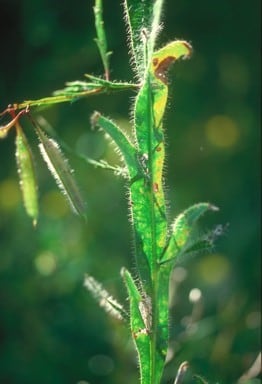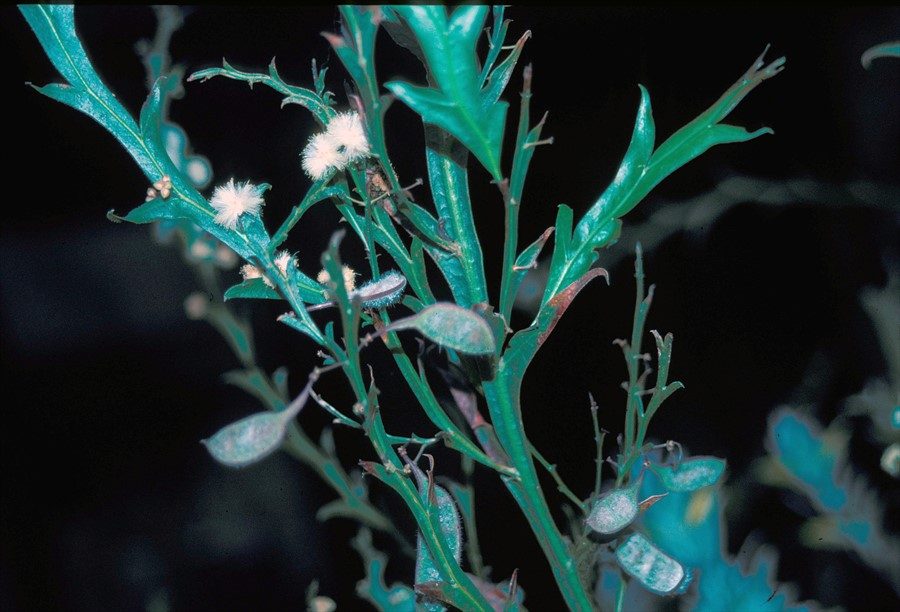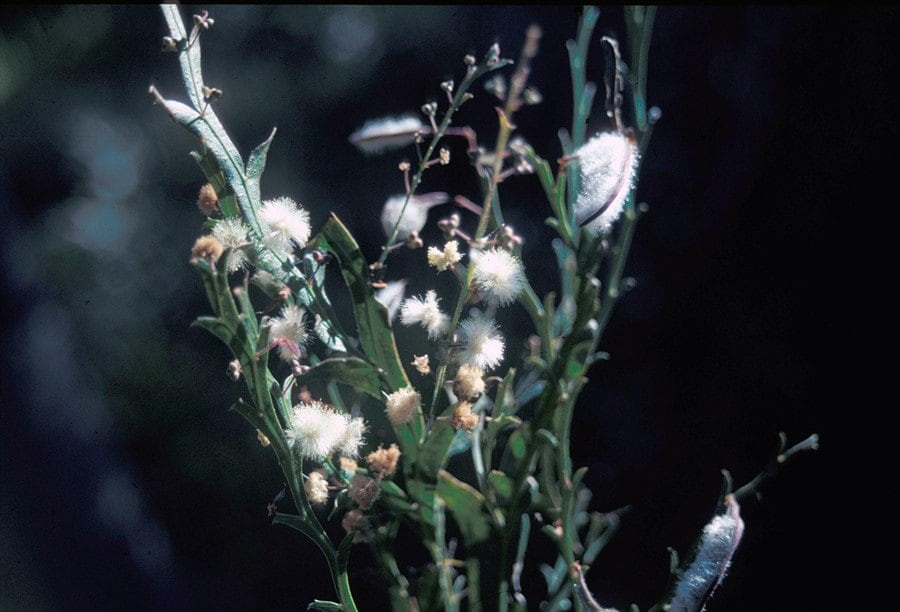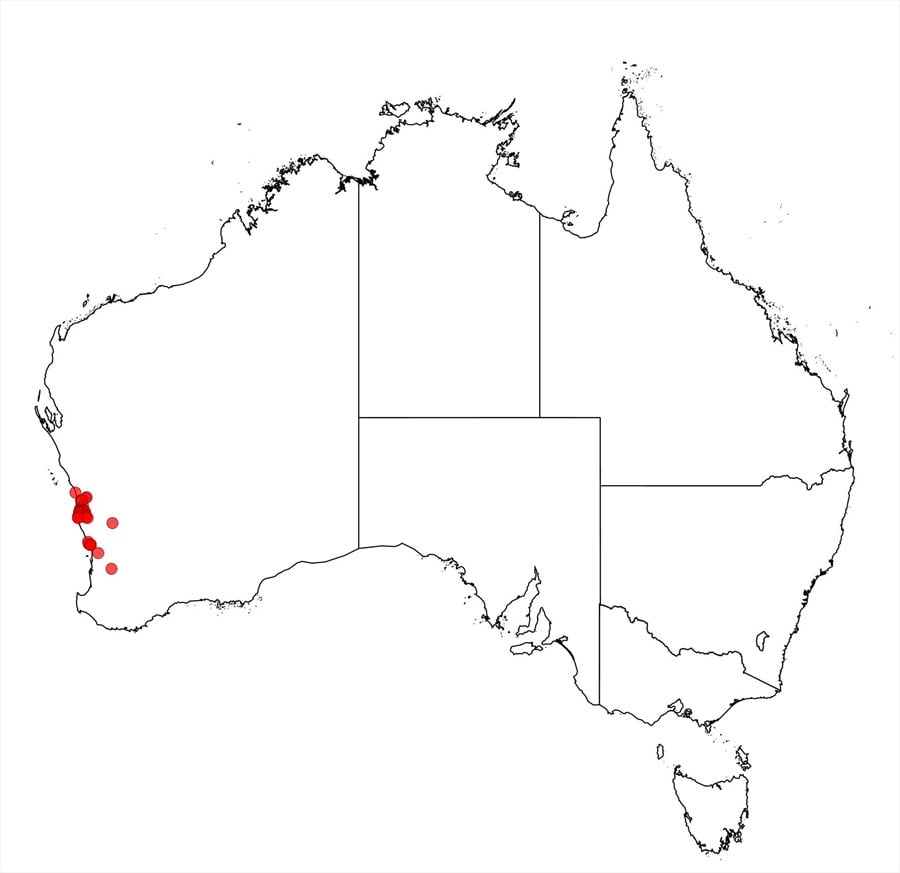Acacia alata var. tetrantha Maslin
WATTLE
Acacias of Australia
Family
Fabaceae
Distribution
Disjunct, occurring from Eneabba S to Cervantes, and at Yanchep (c. 130 km S of Cervantes), W.A.
Description
Shrub 0.3–0.6 m high, spreading to 1.5 m across. Stipules innocuous. Phyllodes on non-flowering region of stems 3–10 mm wide, occasionally 15 mm wide; free portion of phyllodes straight to recurved, 10–70 mm long, acuminate, with innocuous to scarcely spinose and straight or recurved to strongly uncinate apex; gland-angle often very prominent, normally 1, rarely 2 or 3. Peduncles glabrous or hirsutellous to shortly pilose; heads 4-flowered, white; buds gradually or abruptly narrowed to apiculate or acute points. Pods curved to substraight, 7–11 mm wide.
Phenology
Flowers Apr.–July; in the other varieties flowering commences in June.
Habitat
Usually grows near watercourses on sand and sandy clay in low open eucalypt forest and woodland, and in mallee and paperbark (Melaleuca sp.) communities.
Specimens
W.A.: 9 km SSE of Eneabba, R.J.Hnatiuk 770907 (PERTH); Yanchep Natl Park, A.M.James 297 (PERTH); Hill R. crossing, c. 16 km due E of Jurien Bay, B.R.Maslin 2621 (BRI, CANB, PERTH); loc. id., B.R.Maslin 2621A (K, PERTH); Cockleshell Gully, R.Pullen 9684 (CANB n.v., PERTH).
Notes
Free portion of phyllodes vary from long, narrow, recurved and uncinate (around Yanchep) to short, broad, ±straight and not uncinate (around Eneabba).
The 4-flowered white heads and acute to subacute flower buds readily distinguish var. tetrantha from the other varieties of A. alata. Vegetatively it is most similar to var. platyptera.
FOA Reference
Data derived from Flora of Australia Volumes 11A (2001), 11B (2001) and 12 (1998), products of ABRS, ©Commonwealth of Australia
Author
B.R.Maslin
This identification key and fact sheets are available as a mobile application:
URL: https://apps.lucidcentral.org/wattle/
© Copyright 2018. All rights reserved.

 Acacia alata var tetrantha Western Flora, Eneabba, WA
Acacia alata var tetrantha Western Flora, Eneabba, WA Acacia alata var tetrantha Western Flora, Eneabba, WA
Acacia alata var tetrantha Western Flora, Eneabba, WA






